We’ve already shared a guide on some basic travel tips you should know when visiting Japan, and we hope that had you navigating the land of the rising sun with confidence and swagger.
If not, no worries. With the basics hopefully mastered, we thought we’d delve a little deeper into the wonderful and complicated world of Japanese etiquette. One thing we’ve learnt on various trips to the country is that manners matter. So much so, in fact, that the word has been adopted into Japanese vocabulary as ‘mana’.
This is an umbrella term used to describe all manner (sorry) of appropriate and inappropriate behaviour in the country, all of which we’ll explain further today. With that in mind, here are 16 essential etiquette tips for your first trip to Japan.
To Tip Or Not To Tip?
Tipping variations are confusing all over the world, but in Japan, they’re super complicated. The rules of saving face apply to tips, with many staff politely turning them down. But sometimes, especially in larger cities, a token of generosity will be warmly received. Confused? Yep, us too.
Generally speaking, it’s better to play it safe and don’t tip. In Japan, good service is a standard expectation and is not rewarded with tips. Offering a tip can actually be seen as offensive, as it may imply that the service staff relies on extra incentives to do their job well. Instead, express your gratitude with a heartfelt “arigatou gozaimasu” (thank you very much).
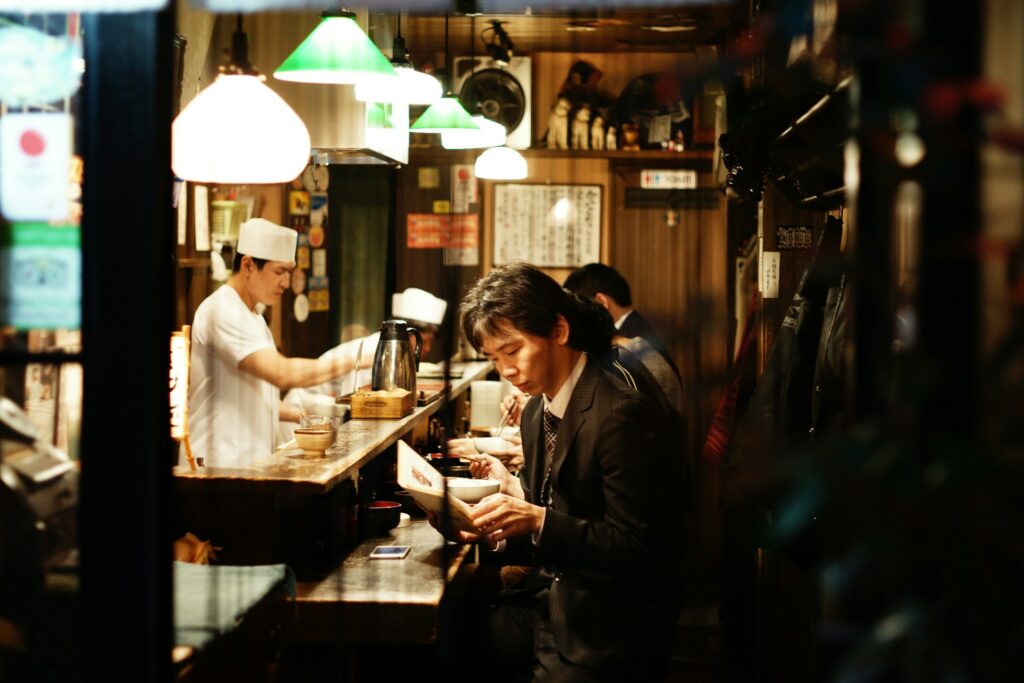
Cash Is King
While the world moves towards cashless transactions, Japan still has a strong cash culture, especially in smaller towns and businesses. Always carry sufficient cash with you, and when handing over money or receiving it, use both hands and give a slight bow—it’s a sign of respect.
Navigating The Language Barrier
Here’s the truth: outside Tokyo’s main drags and Osaka’s tourist centre, English is about as common as a quiet pachinko parlour. Even in the big cities, you’ll find yourself mime-acting your way through izakayas and pointing desperately at picture menus like a toddler with limited motor skills.
The good news? Most Japanese people will make a genuine effort to help when you’re struggling, often pulling out translation apps or drawing maps. But relying entirely on others gets exhausting, and frankly, learning a few phrases shows basic respect for the place you’re visiting.
Download Google Translate before you land—the camera function that translates text in real time is genuinely brilliant for menus and signs. Pocket wifi or a local SIM card isn’t optional; it’s essential. A phrasebook works when your phone dies, which it will, probably while you’re lost in a residential neighbourhood trying to find your Airbnb.
For business trips or extended stays where you’ll encounter formal documents, contracts, or professional correspondence, authentic Japanese translators can provide the accuracy and cultural context that apps simply can’t match.
On the flip side, if you’re planning more than a quick holiday, a few sessions with a tutor will save you from the daily frustration of not knowing how to ask where the toilet is.Even basic competence makes everything easier, from ordering food to navigating situations where you need to overcome the language barrier with more nuance.
Don’t Blow Your Nose In Public
In the ‘west’ it’s generally considered rude to sniff and snuffle, with fellow commuters, diners, shoppers and the rest quietly imploring you to blow your nose and keep the noise down. But in Japan, the opposite is true; it’s considered rude to blow your nose in public. So, if you are suffering from a runny one, run to a private place to clear it up.
Amazingly, WikiHow has a whole page dedicated to tips on how to blow your nose in Japan. A useful resource, indeed.
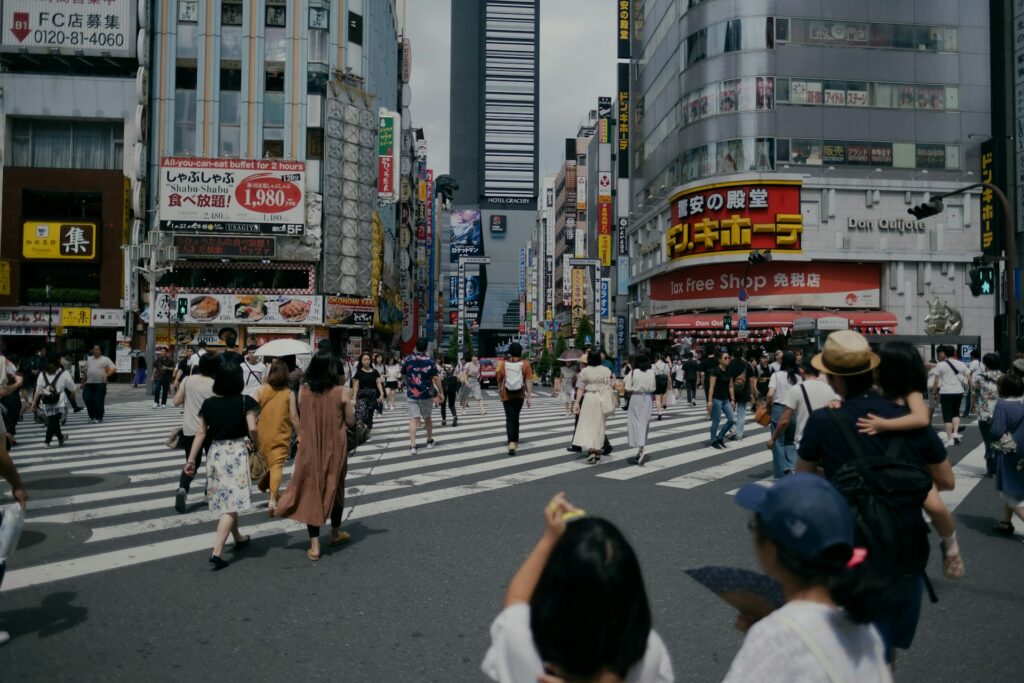
There Are Different Bows For Different Occasions
In Japan, bowing is more than a mere formality; it’s a deeply ingrained social custom. The act of bowing ranges from a small nod of the head to a deep bend at the waist, depending on the situation. As a visitor, you’re not expected to know the intricate rules, but a polite inclination of the head when greeting or thanking someone is a sign of respect that will be appreciated.
Greeting bow, respect bow, highest respect bow; learn them all and when each is appropriate. And deliver them with frequency and enthusiasm. Of course, some leeway will be granted for not knowing when or how to execute the perfect bow, as you’re a foreigner and not in tune with local customs. But, being able to judge a situation and its necessary gesture will earn you some serious brownie points. As a general rule, a curved back is to be avoided; a straight one is very much encouraged.

Shoes Off, Please!
Speaking of manners, let’s talk about shoes. Leaving your shoes on when entering someone’s house is disrespectful; in fact, you’ll always see a full shoe rack outside the domestic door. The gesture is appropriate on two levels; firstly, it literally keeps the floor clean; secondly, it denotes respect for your host.
Slippers are often provided for indoor use, but remember to switch back to your shoes when stepping onto a tatami mat, as these are to be tread upon only in socks or bare feet.
Respect The Queue
Us Brits have a reputation for queuing, and doing it well. However the Japanese take the act of queuing to a whole different level, waiting in perfectly formed lines for everything – some even say it’s an art form. I think we agree. Even at rush hour, you won’t see people pushing, cutting the queues or breaking rank. When you see a long line snaking around the block, don’t even think about saving someone a spot. It’s frowned upon.
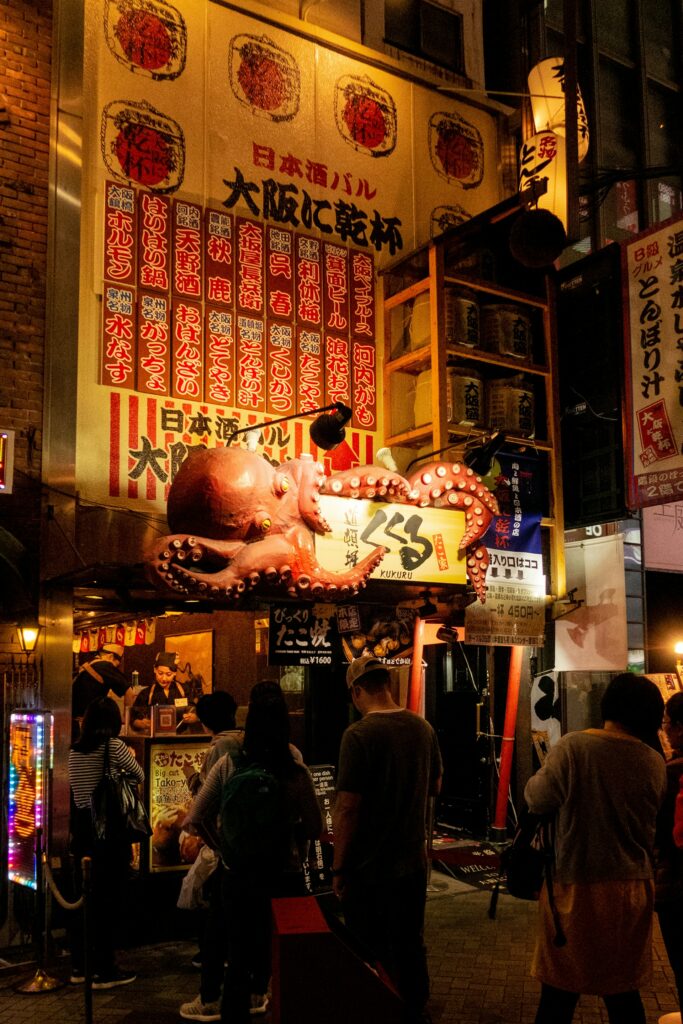
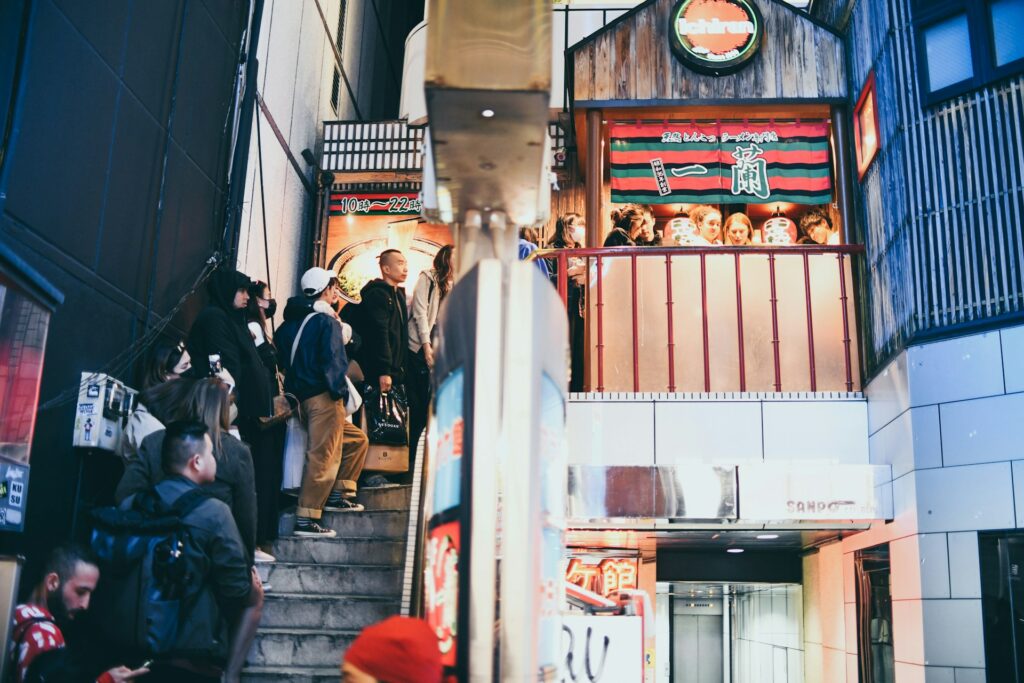
Photography With Permission
Japan offers a wealth of photogenic scenes, from the neon lights and street food bites of Tokyo to the serene beauty of Kyoto’s temples. However, always ask for permission before taking photos of people or private property. In some places, photography is strictly forbidden, so look out for signs or ask if you’re unsure.
Speak Quietly In Public
The Japanese are mindfully aware that they share public spaces with other people and therefore everyone should be comfortable. Keep your voice down in public spaces and whatever you do, don’t use your phone on trains or buses. Any rowdiness or behaviour which disturbs the zen-like calm of the public space is to be avoided. While initially difficult to restrain yourself, you’ll come to appreciate the quiet calm.


Don’t Walk & Eat
Smashing back a sausage roll on the way to the tube stop is as natural to us Londoners as lions to the savannah, but in Japan, people don’t walk and eat. This is all down to having respect for food, with the distraction of moving your legs while eating considered too casual a relationship with the meal. Taking a seat to eat shows proper respect for the cook, and the grower of ingredients, farmer of protein and so on; an attitude we are really on board with.
Handling Chopsticks With Care
Chopsticks are the primary utensils in Japan, and using them correctly is a mark of good manners. Some key points to remember include not sticking your chopsticks upright in a bowl of rice (as this resembles a funeral rite), not passing food directly from your chopsticks to someone else’s (another funeral custom), and placing them on the chopstick rest when not in use.
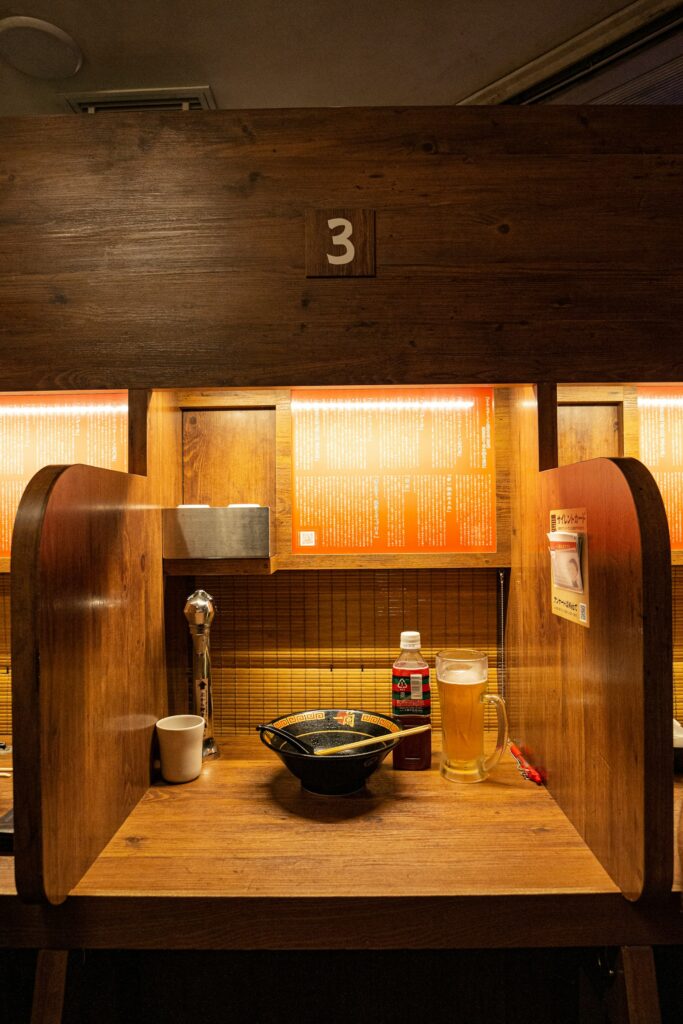
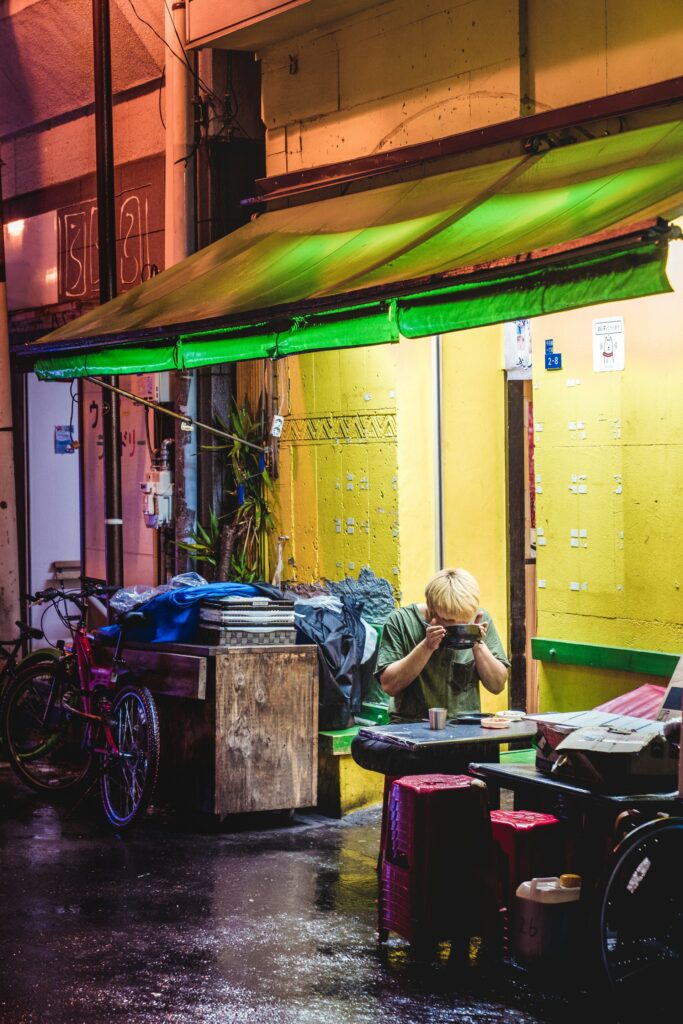
Slurp Away
Noodles in Japan are gooood. And sometimes you’ll be enjoying them with such gusto that you’ll realise you’ve been slurping noisily. Fear not for causing offence though, as slurping your noodles is totally acceptable in Japan.
Encouraged even, it’s a sign that you’ve appreciated your meal, and, running with the same theme, it’s also totally acceptable to drink soup straight out of the bowl. Just don’t do it while moving, or things will get messy, both practically and philosophically.
Be Mindful Of Mealtime Manners
Aside from the chopsticks and the slurping, there are some other pointers involving Japanese mealtime etiquette that you should know.
A dance of tradition and respect, before beginning to eat it’s customary to say “itadakimasu” (I humbly receive), expressing gratitude for the food. During the meal, hold the rice bowl in your hand and lift it towards your mouth, which is considered polite. It’s also important to try a bit of every dish if you’re served a set meal, as this shows appreciation for the chef’s efforts.
After you’ve finished eating, signal your satisfaction by placing all your dishes back how they were at the start of the meal and saying “gochisousama deshita” (thank you for the feast).
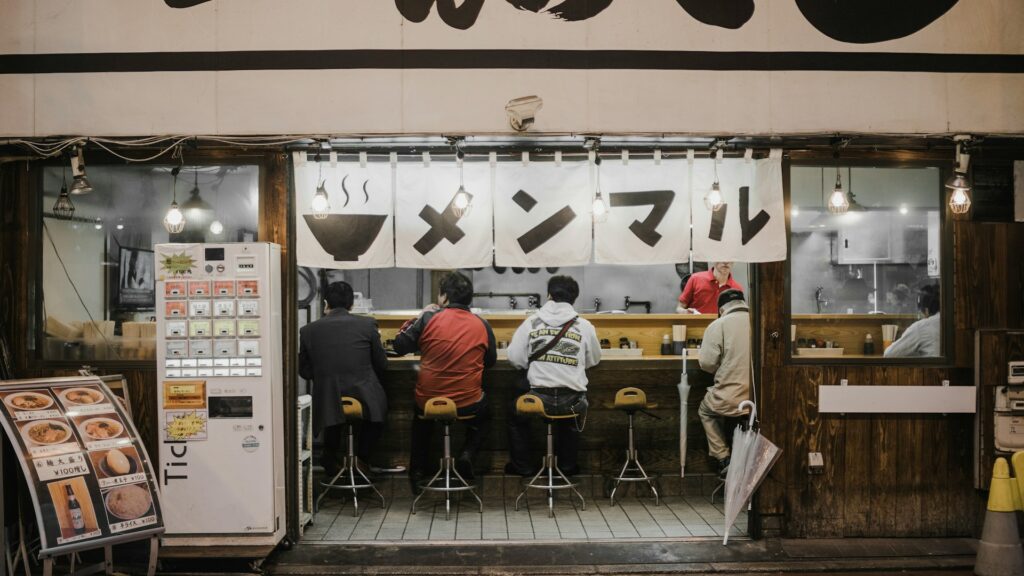
Navigate Onsen Etiquette
A visit to an onsen, or hot spring bath, is a must when in Japan, but it comes with its own set of rules. Before entering the communal bath, you must wash and rinse your body thoroughly at the provided shower stations. This cleansing ritual ensures that the bathwater remains clean for everyone.
Tattoos are traditionally associated with the yakuza (Japanese mafia) and can be frowned upon in onsens; however, some places now offer stickers to cover small tattoos or have become more lenient towards tourists with tattoos. Remember, the onsen is a place for quiet relaxation, so keep conversations at a whisper and soak in the tranquillity along with the rejuvenating waters.

Handling Refuse
Japan is known for its cleanliness, and you’ll rarely find litter bins on the streets. This is because the Japanese take responsibility for their own rubbish, often carrying it with them until they find a place to dispose of it properly. Follow suit to keep Japan tidy.
Two Hands Are Better Than One
When receiving a business card or gift, as well as giving an item of importance, always use two hands to indicate respect and care, both for the product and person. To not do this is to show a lackadaisical attitude to the country, its customs and citizens. And that’s not why you got to the end of this article, now is it?





